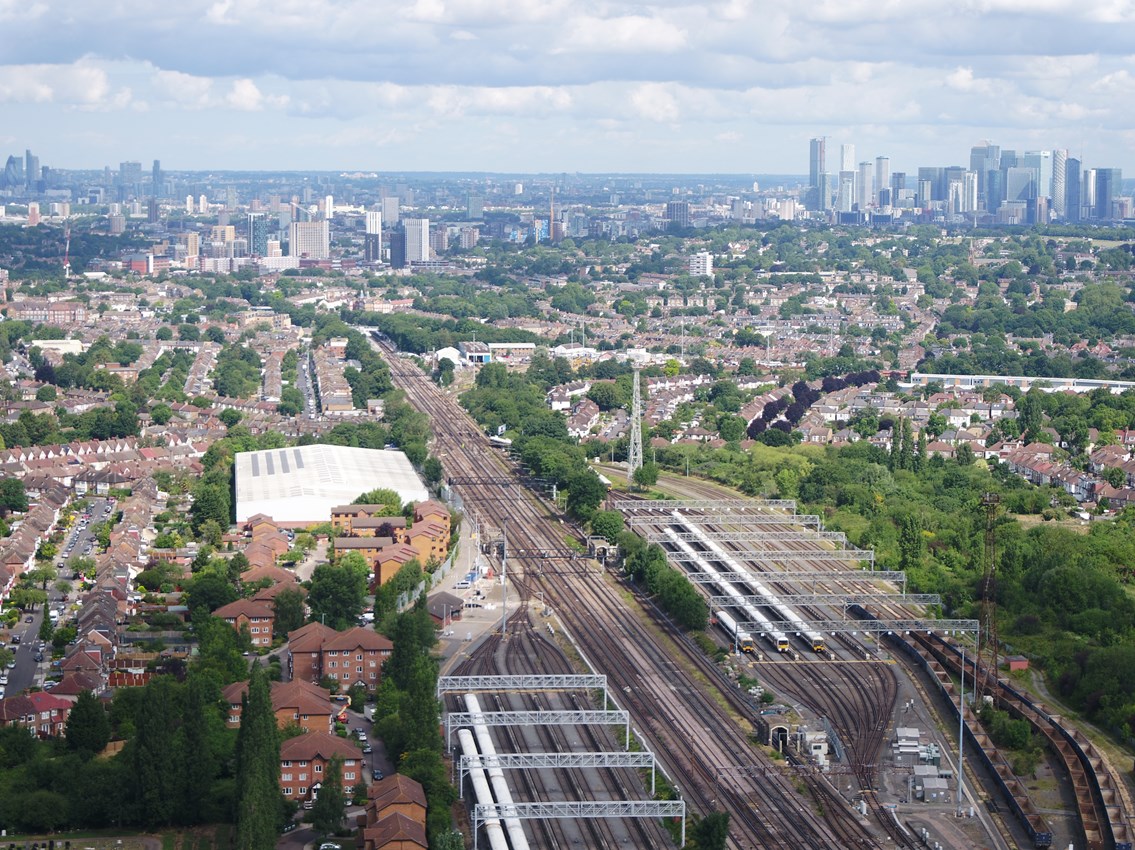Monday 26 Apr 2021
Network Rail invites £1bn private sector investment in telecoms infrastructure to upgrade rail network for passengers
- Region & Route:
- National
- Private sector companies invited to invest in Britain’s rail telecoms network in return for the right to commercialise spare capacity
- Deal – which could save Network Rail up to £1bn – would enable increased reliability and train performance, improve safety for passengers and frontline workers, and make a meaningful contribution to boosting connectivity for passengers
- Proposal supports wider Government objectives to boost connectivity capability in rural areas
Network Rail is seeking private sector investment in its trackside fibre optic cable network in a deal that would enable performance, safety and connectivity benefits for passengers, save the taxpayer up to £1bn in costs and support the Government’s objectives to improve connectivity across Britain, including in rural areas.
As part of Network Rail’s initiative to create a safer, more modern and digitally-connected rail network, this ambitious plan aims to secure the funding necessary to upgrade telecoms infrastructure along the rail network in an innovative way without relying on subsidies from government or passengers.
Over 16,000km of data cables next to the railway – carrying information essential to running the railway such as signalling for trains, trackside sensors, CCTV, and internet for trains, railway depots and offices – are due to be upgraded. As Network Rail will not require the full capacity of new cutting-edge fibre optics, there will be sufficient capacity for a third-party to run its own telecoms services – making use of the significant geographical reach of the national rail network to meet demand for improved fibre connectivity across Britain, and taking advantage of the lower cost of fibre deployment along the railway when compared with other deployment methods.
Interested parties are advised to contact Lazard – Network Rail’s advisers on the deal – at lazard_reach@lazard.com.
If successful, the deal would offer a number of benefits for passengers, frontline rail workers and those living in rural areas.
- Train performance: Enhancing telecoms infrastructure will enable an improved railway with different parts of the infrastructure – such as trains, signalling and level crossings – more connected than before, ultimately reducing delays and disruption. For example, new fibre optic sensors can detect landslips near the railway and better monitor the lineside for fallen trees.
- Safety: The deal would allow Network Rail to monitor the condition of railway assets more effectively, meaning that faults can be identified and located in real-time. This reduces the number of manual inspections required to be undertaken by frontline workers, and supports a more targeted approach to engineering.
- Train connectivity: The deployment of new fibre optic cable along all major rail routes would also see Network Rail playing a part in enabling improved connectivity for train passengers, with benefits for those wanting to stream videos or browse online using their mobile phones. While this deal in isolation would not deliver all of the passenger connectivity benefits, laying the fibre would be an important foundation and enable better connectivity that could then be delivered through upgrades to lineside telecoms masts and on-board train equipment.
- Rural connectivity: Services ran by the investor can also help to support the Government’s commitment to roll out gigabit-capable connections across the UK, with £5bn allocated to supporting deployment to hard-to-reach areas.
Andrew Haines, Network Rail chief executive, said: “Our telecoms infrastructure requires an upgrade if we are to meet the growing connectivity needs of passengers and the railway itself – particularly to make sure our fibre capacity can handle more data, at greater speed, more reliably.
“This proposal makes good business sense for all parties. We get a cutting-edge, future-proof telecoms infrastructure; the investor gets a great business opportunity; train passengers in Britain get an improved service for years to come; and the taxpayer saves a significant amount of money.”
Transport Secretary Grant Shapps said: “Upgrading the fibre optic cable network beside our railways has the potential to create a more digitally-connected railway, and could lay the foundations towards eradicating the blackspots and phone signal outages which infuriate passengers.
“Unlocking the skills and expertise of the private sector will benefit passengers and help create a modern railway that connects the country.”
Network Rail will now review all expressions of interest, and a further announcement will follow in due course.
Notes to editor:
- Network Rail’s telecoms assets are a critical enabler to running a safe and efficient railway service for passengers and freight users. They support the delivery of secure, efficient and effective services, underpin safety-critical operational services, enable future train control systems, deliver enhanced passenger experience and safety via information and security systems, and connect Network Rail staff, offices and depots by enabling the operation of corporate systems.
Companies interested in finding out more can email lazard_reach@lazard.com.
Contact information
Passengers / community members
Network Rail national helpline
03457 11 41 41
Latest travel advice
Please visit National Rail Enquiries
Journalists
Jack Harvey
Jack.Harvey2@networkrail.co.uk
About Network Rail
We own, operate and develop Britain's railway infrastructure; that's 20,000 miles of track, 30,000 bridges, tunnels and viaducts and the thousands of signals, level crossings and stations. We run 20 of the UK's largest stations while all the others, over 2,500, are run by the country's train operating companies.
Usually, there are almost five million journeys made in the UK and over 600 freight trains run on the network. People depend on Britain's railway for their daily commute, to visit friends and loved ones and to get them home safe every day. Our role is to deliver a safe and reliable railway, so we carefully manage and deliver thousands of projects every year that form part of the multi-billion pound Railway Upgrade Plan, to grow and expand the nation's railway network to respond to the tremendous growth and demand the railway has experienced - a doubling of passenger journeys over the past 20 years.
Follow us on Twitter: @networkrail
Visit our online newsroom: www.networkrailmediacentre.co.uk

